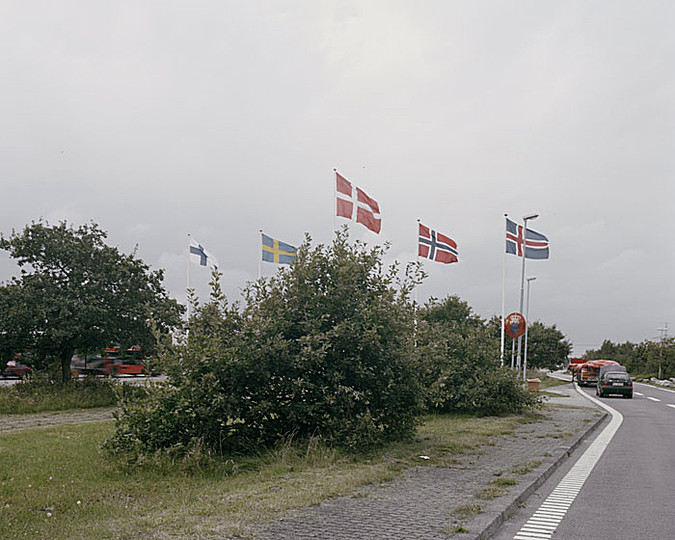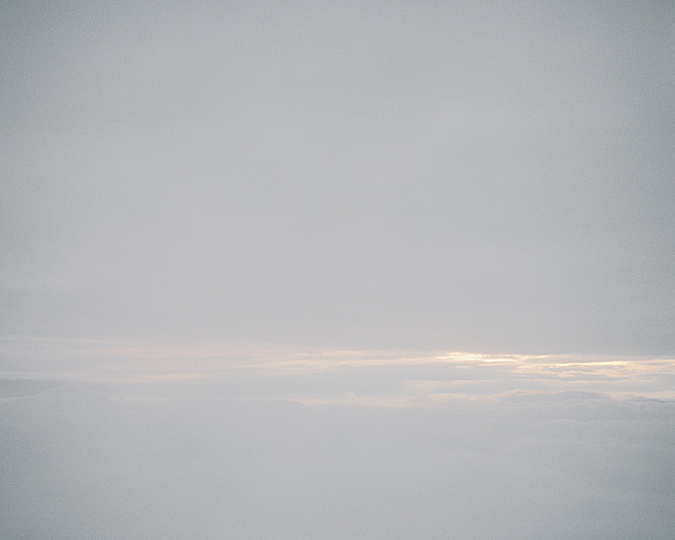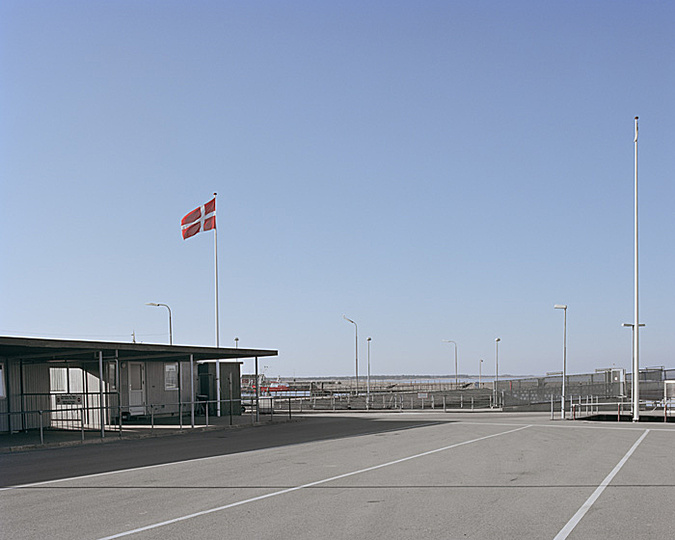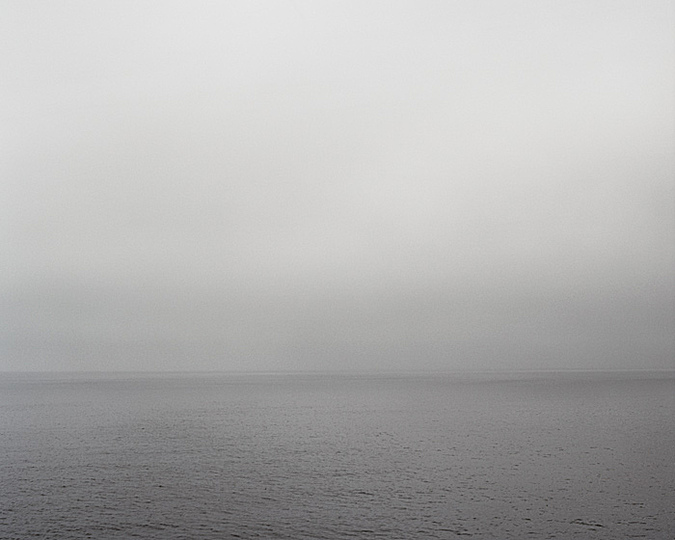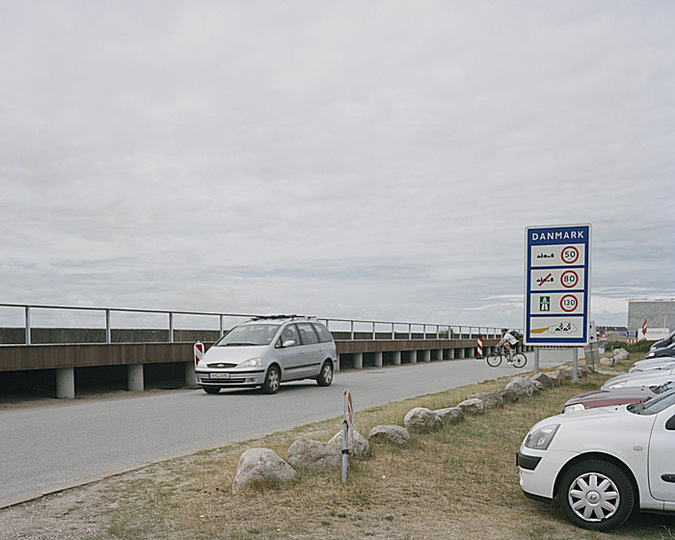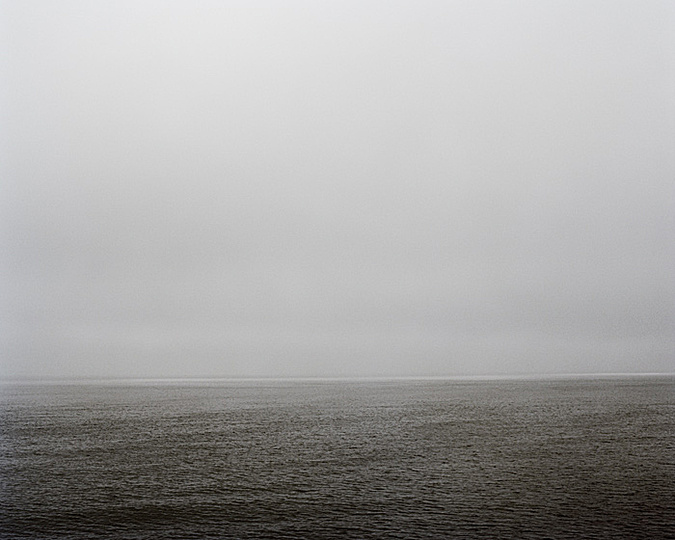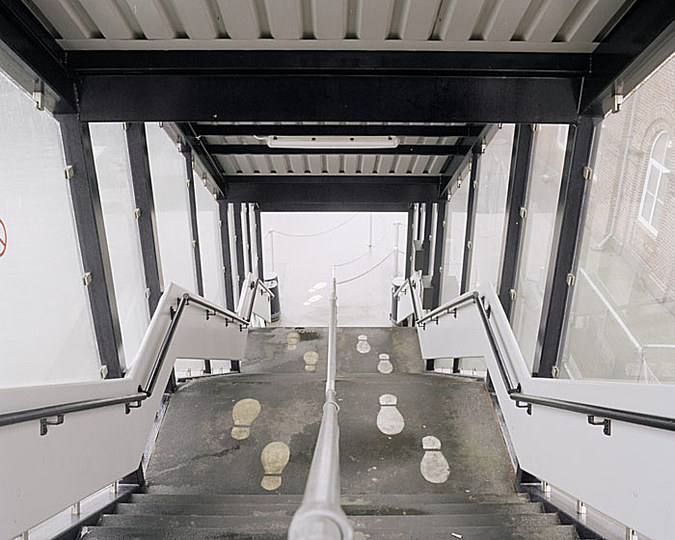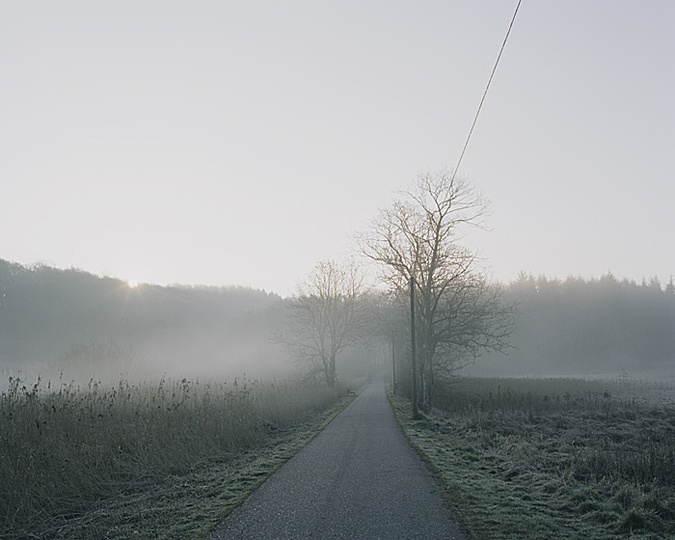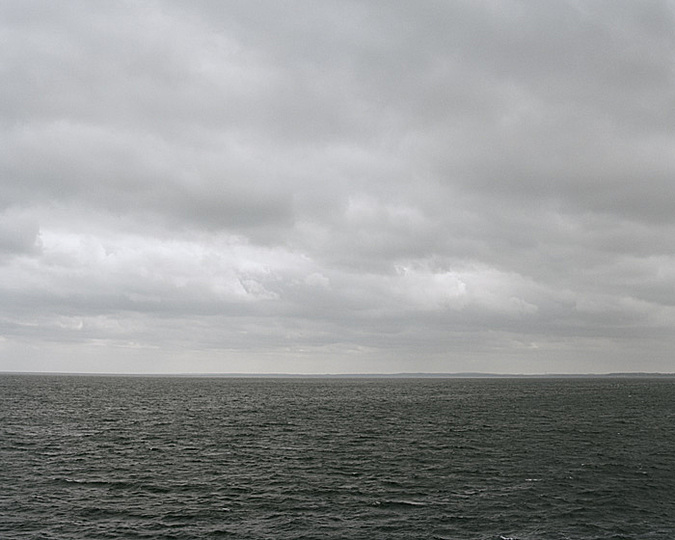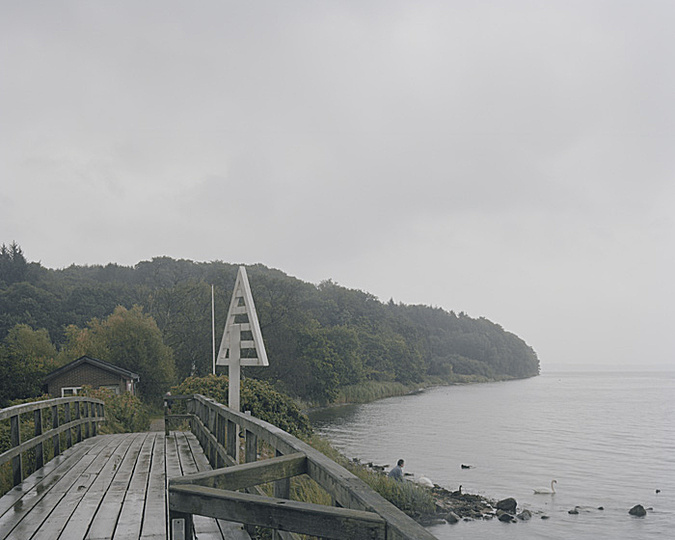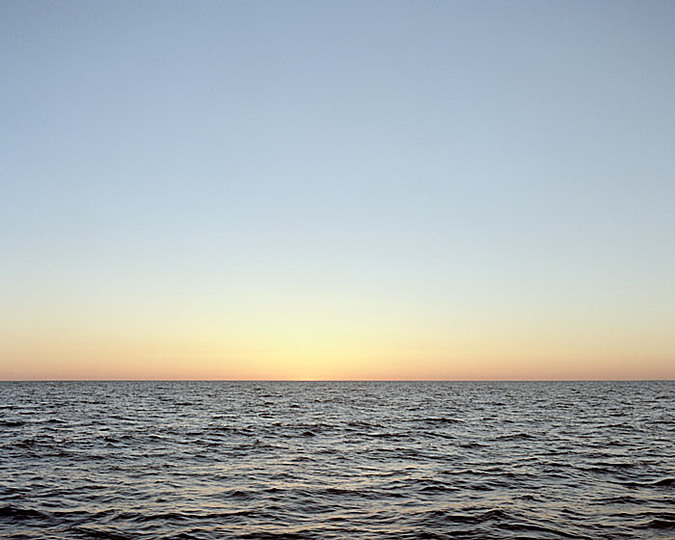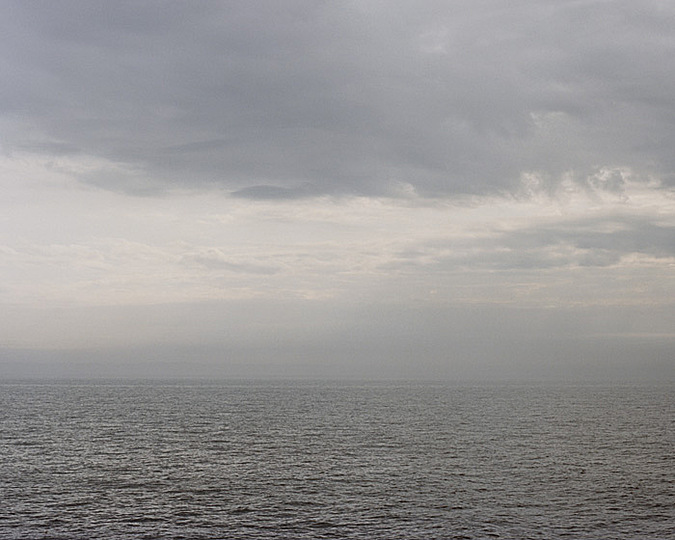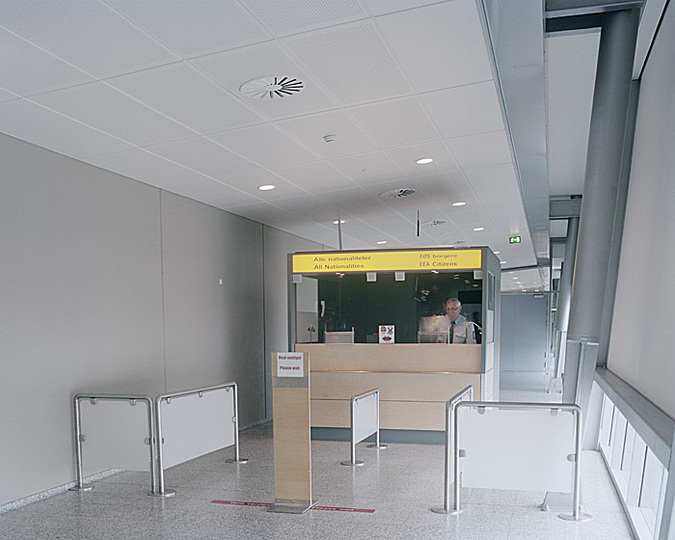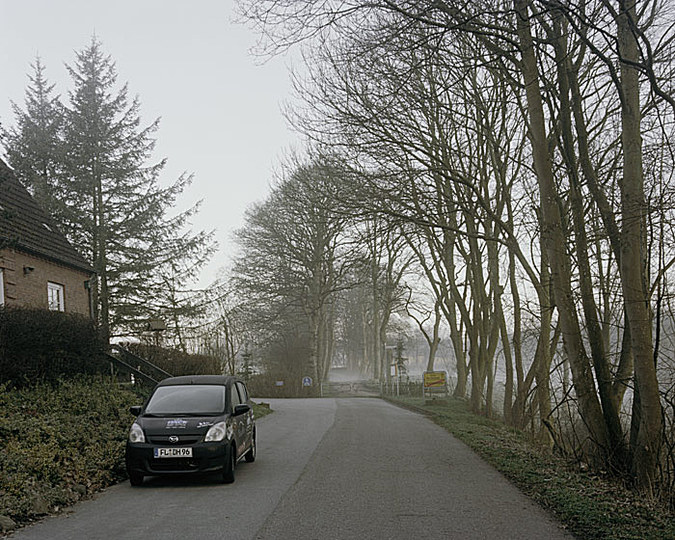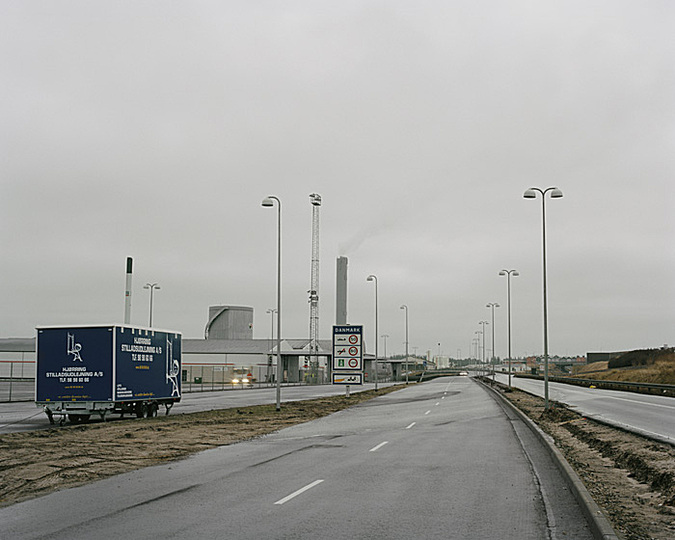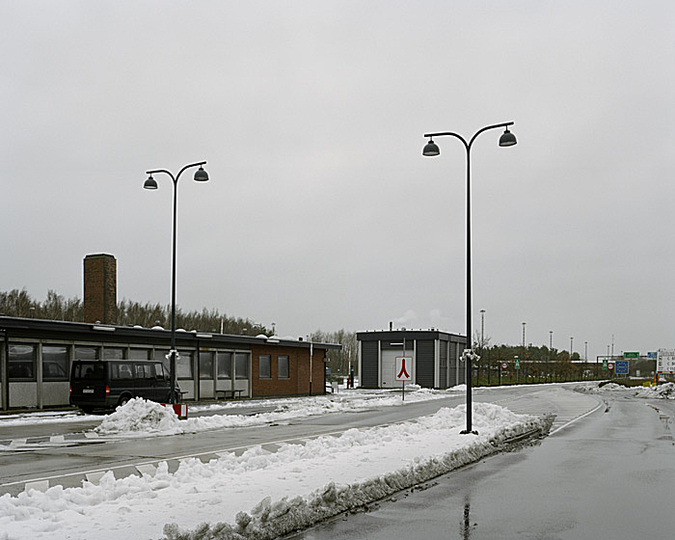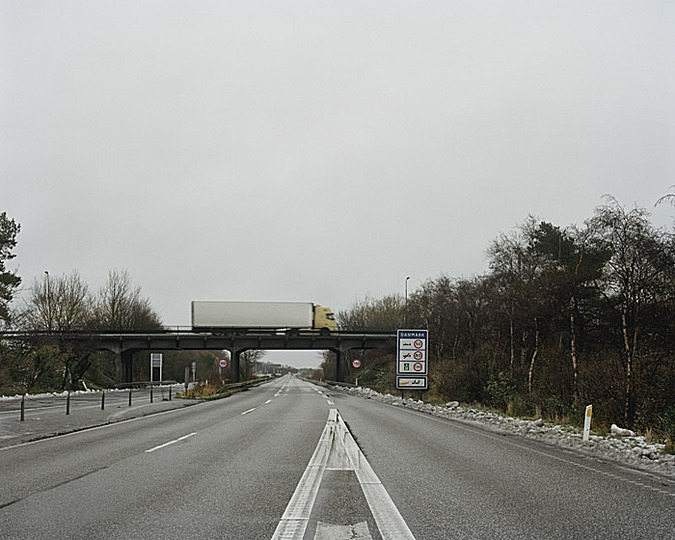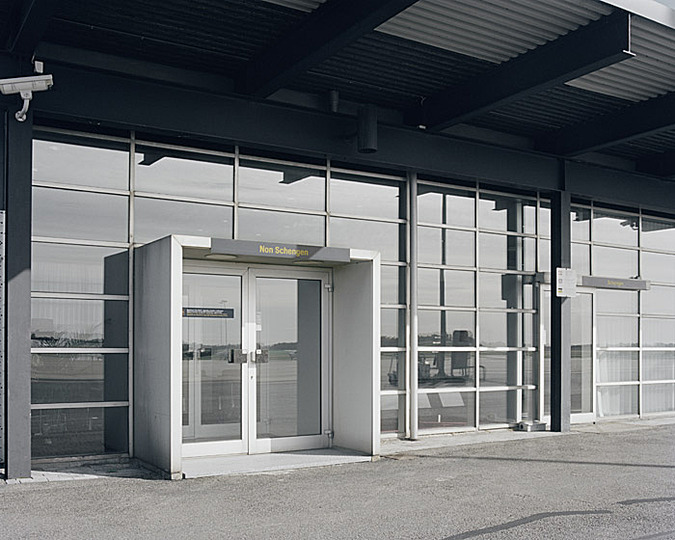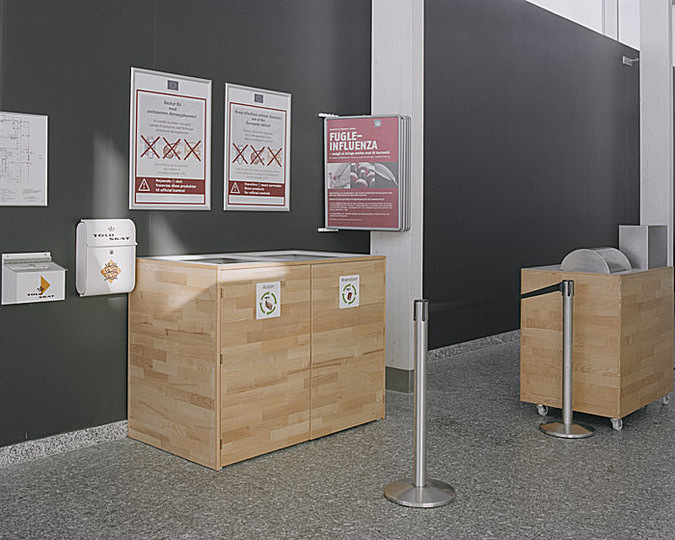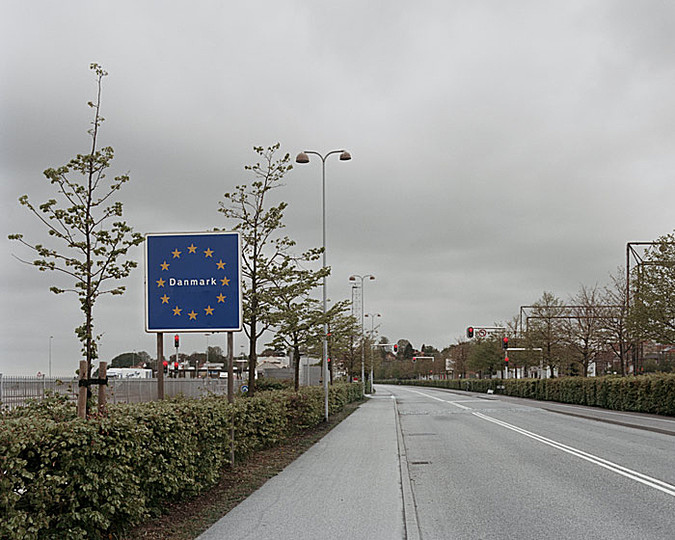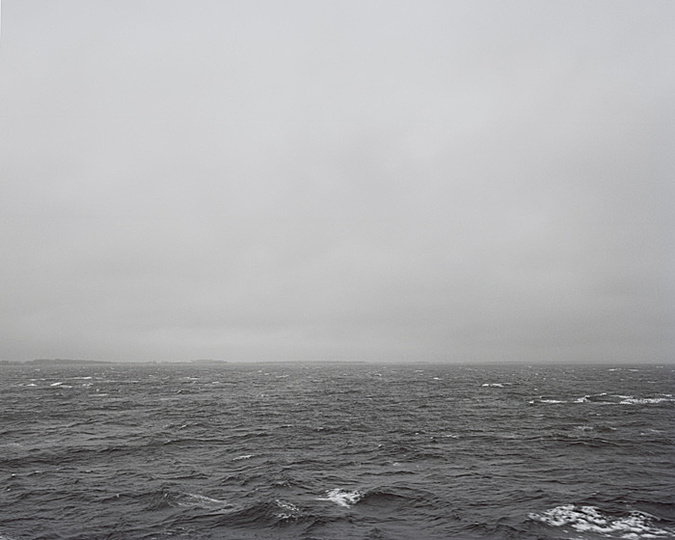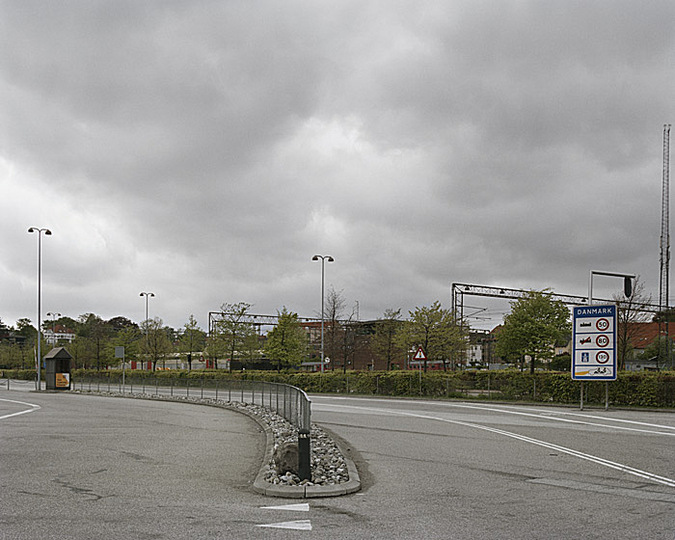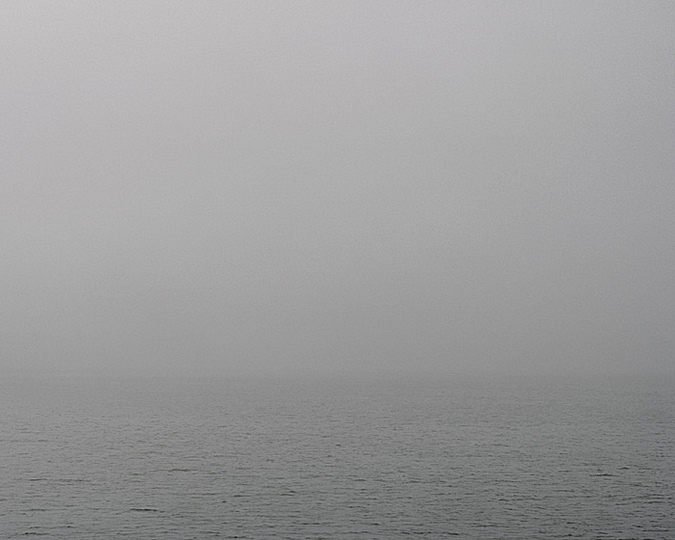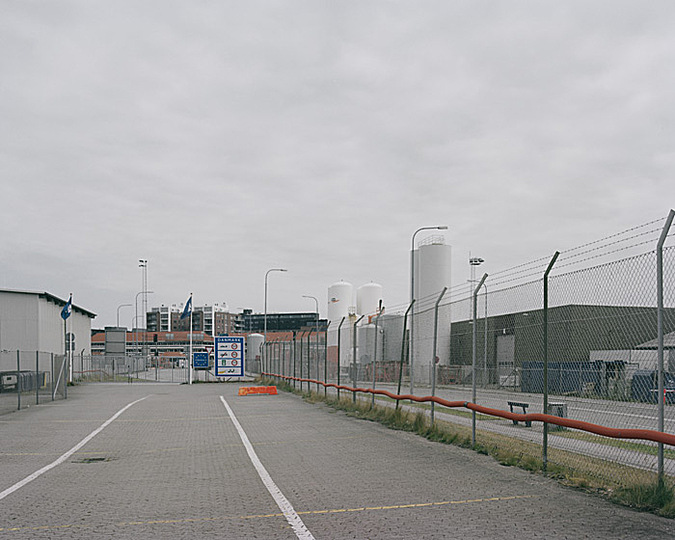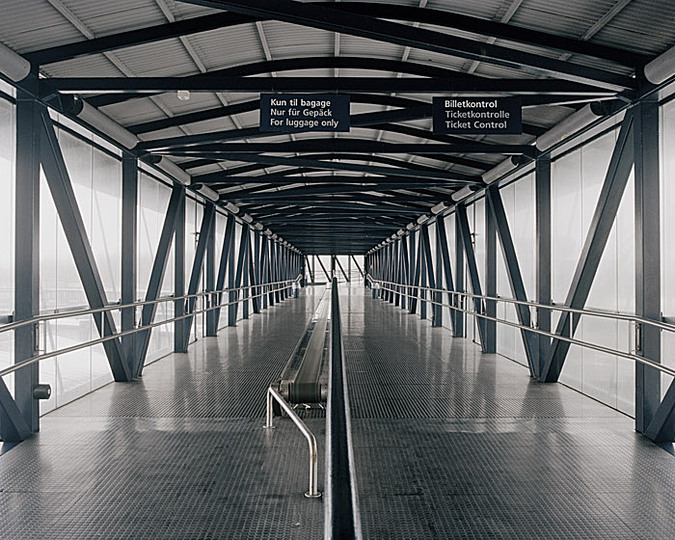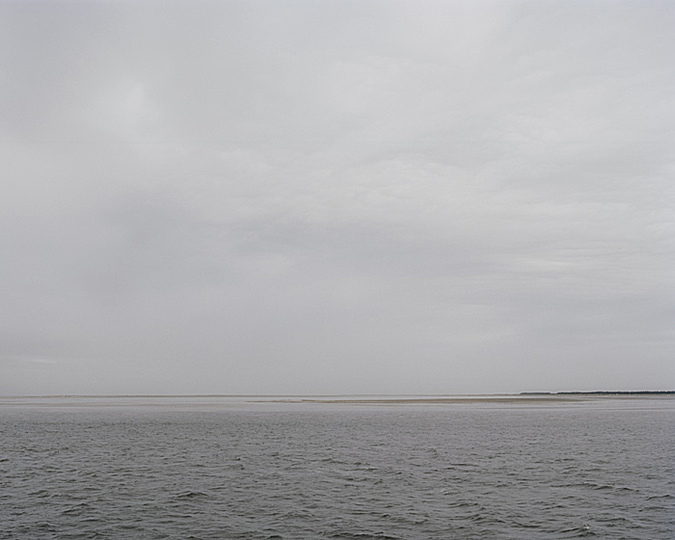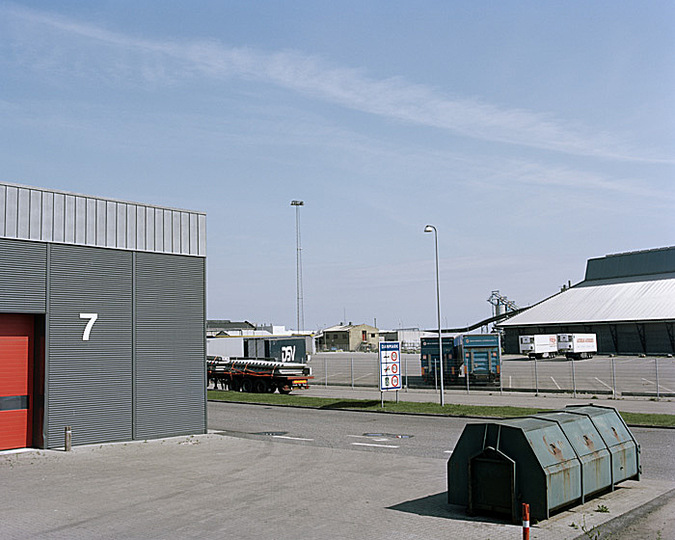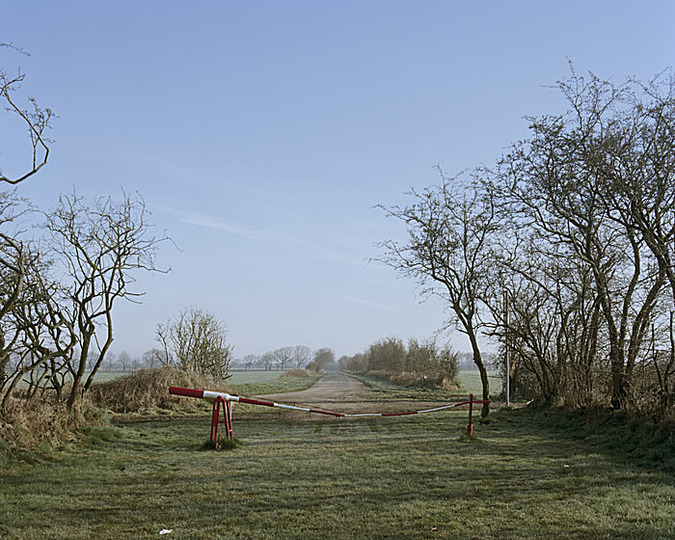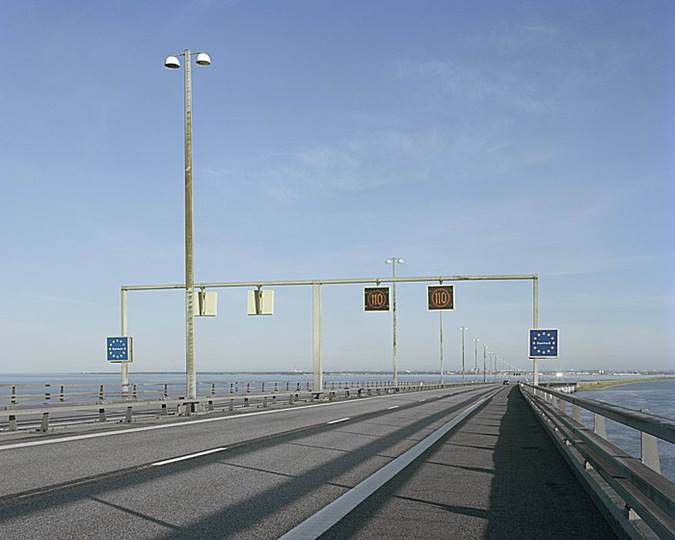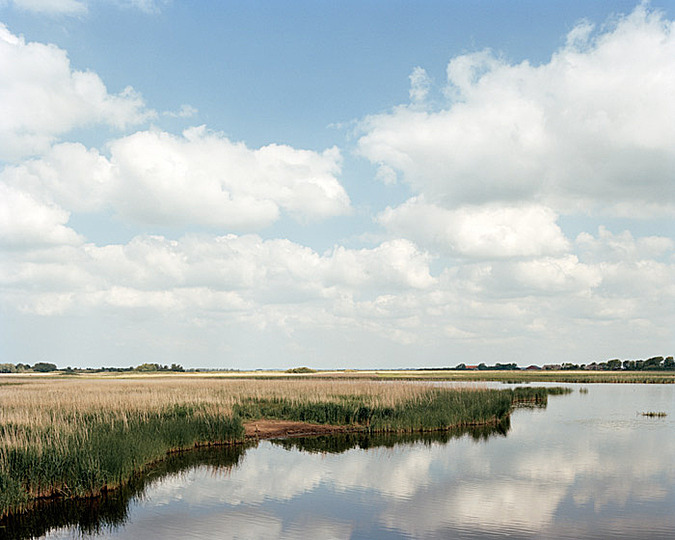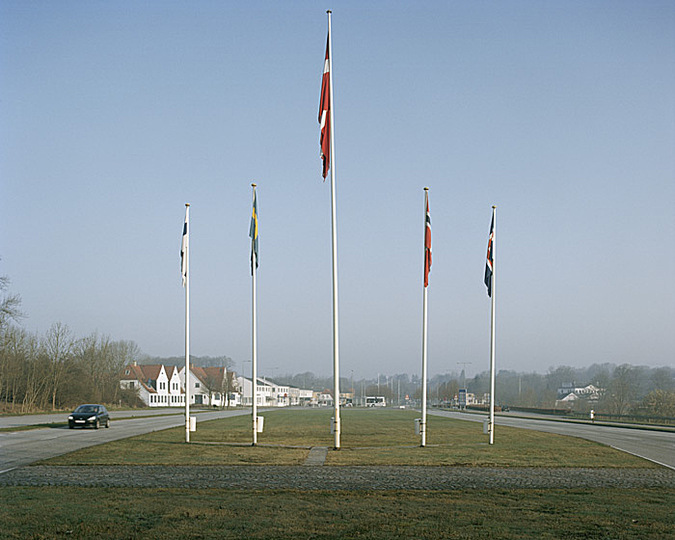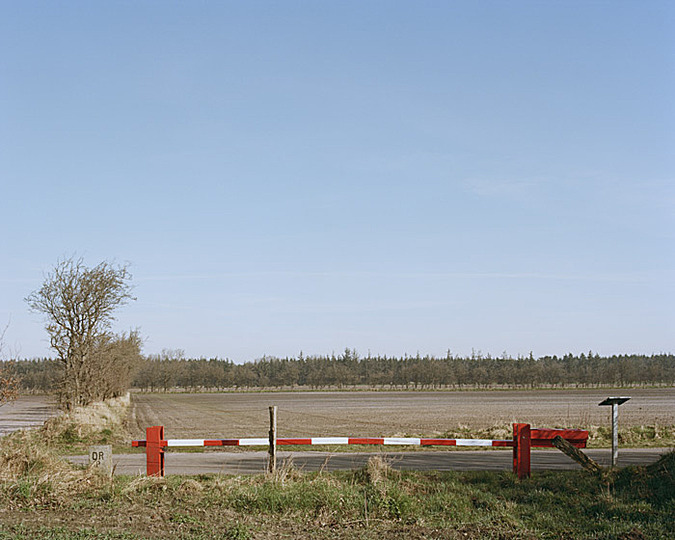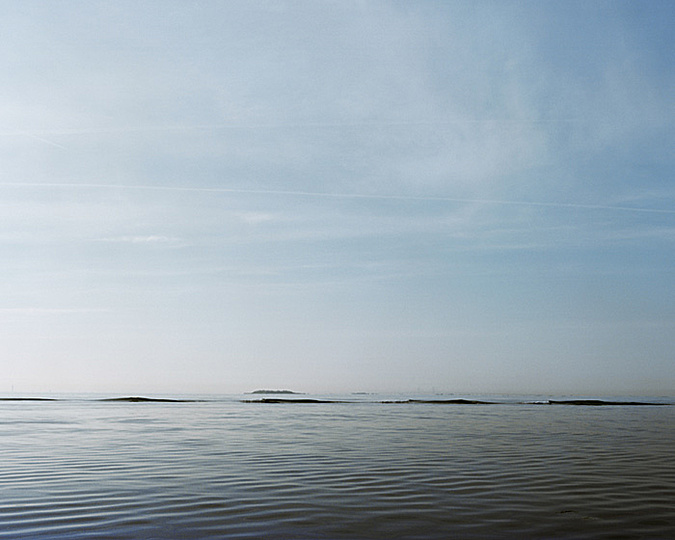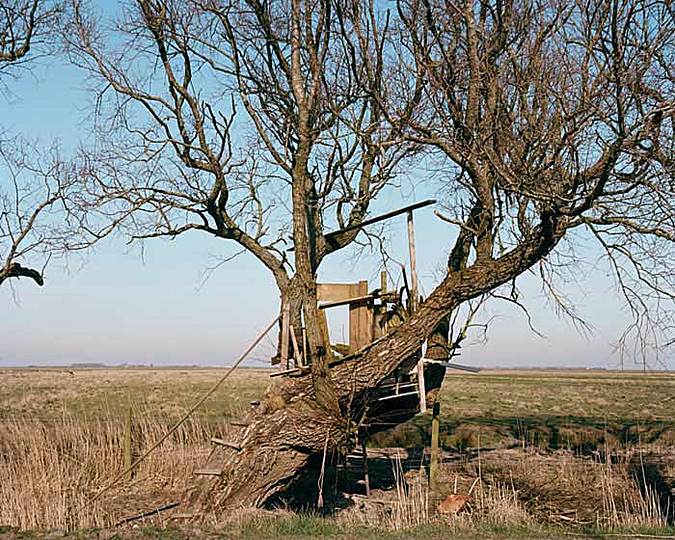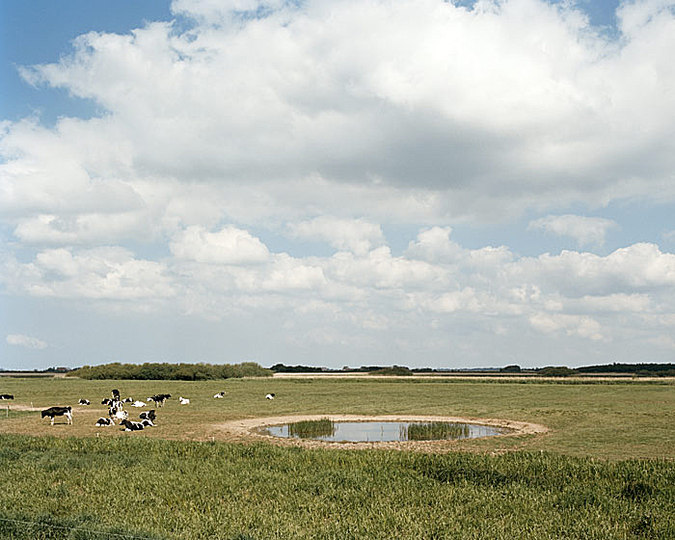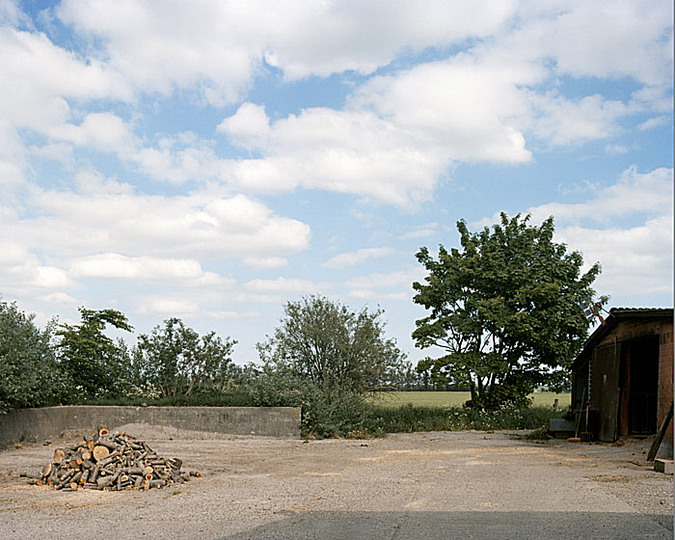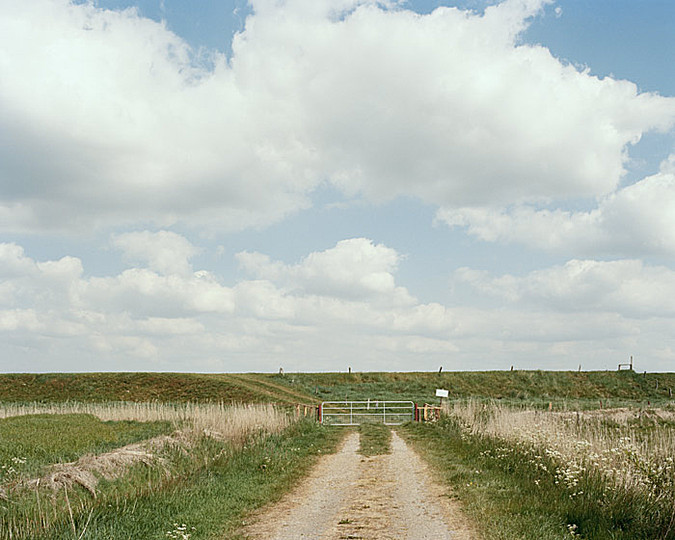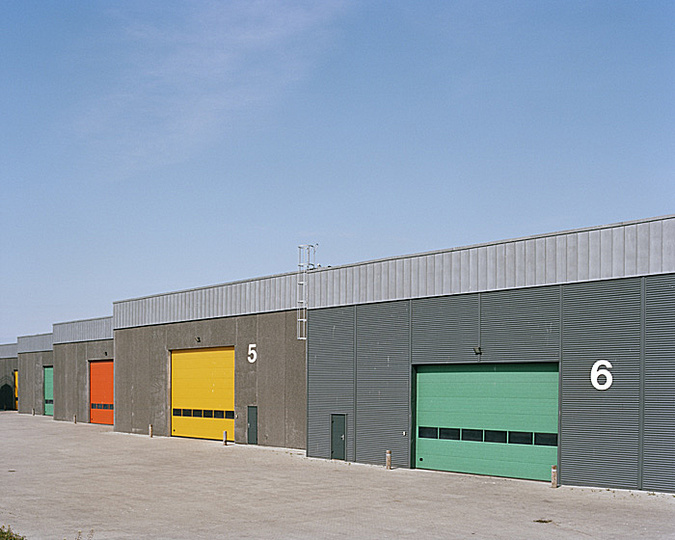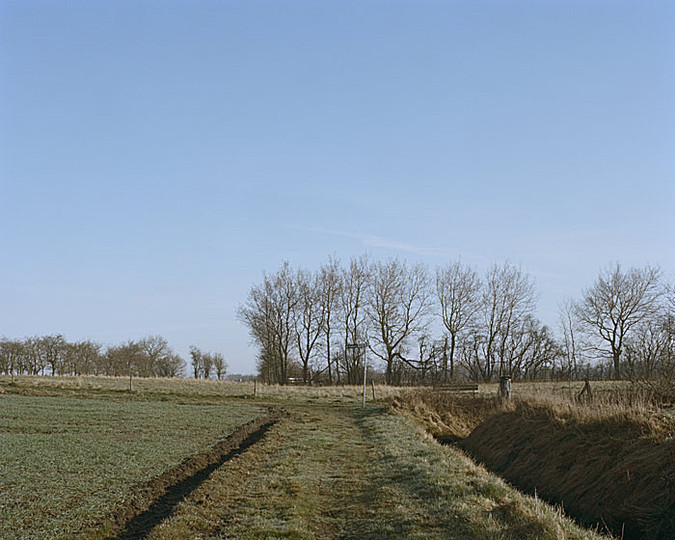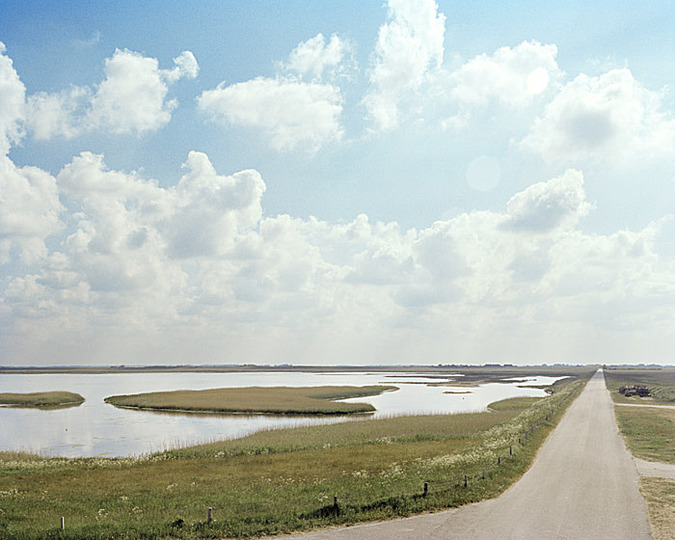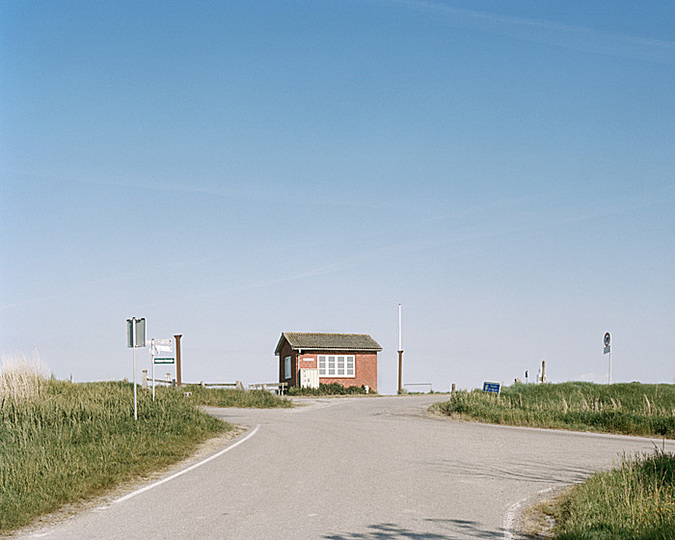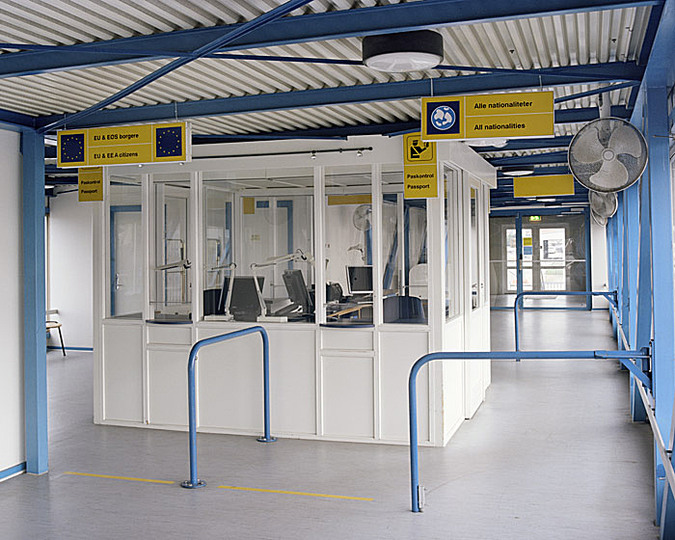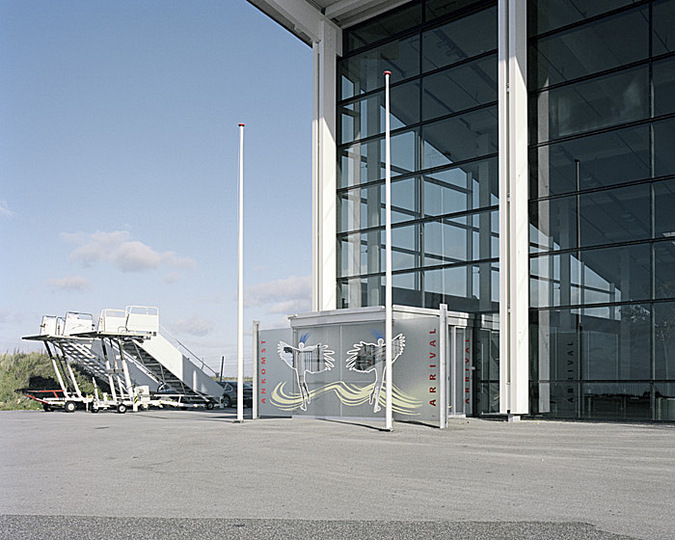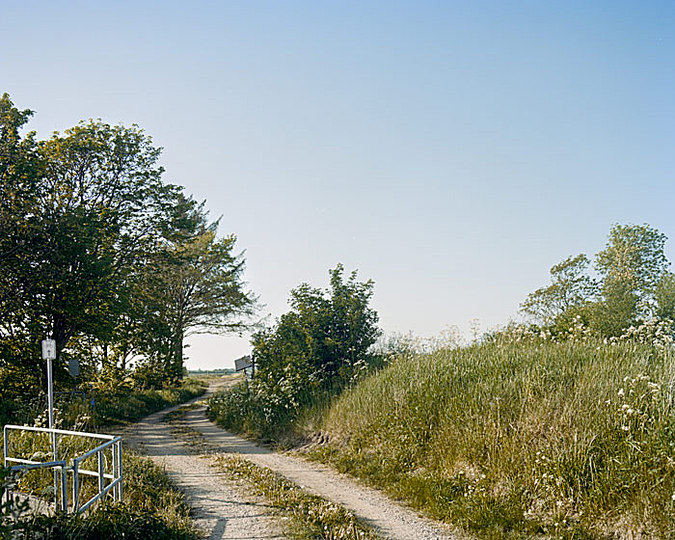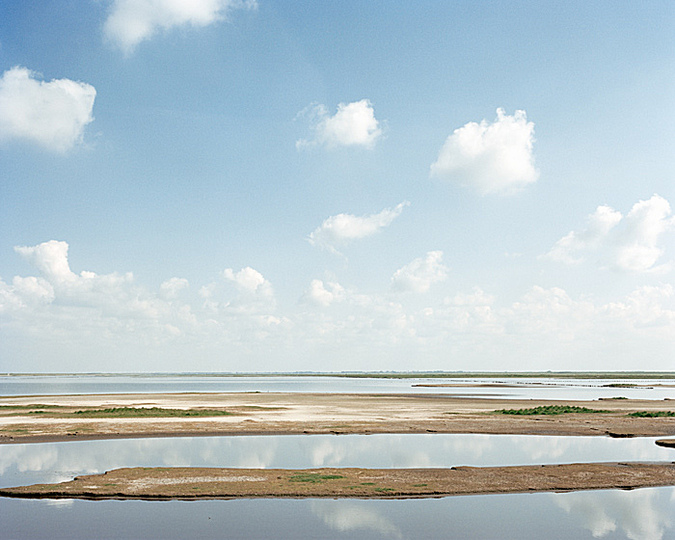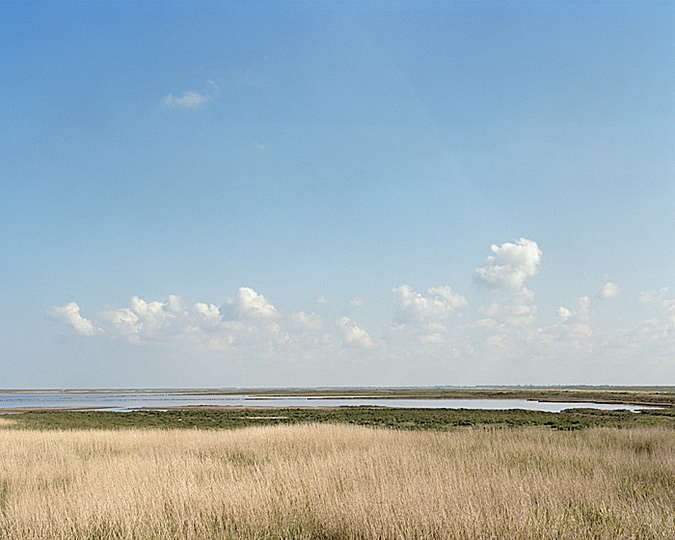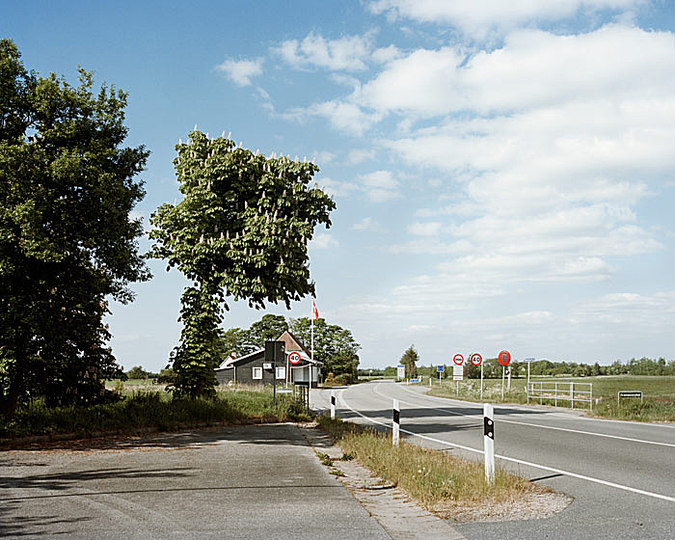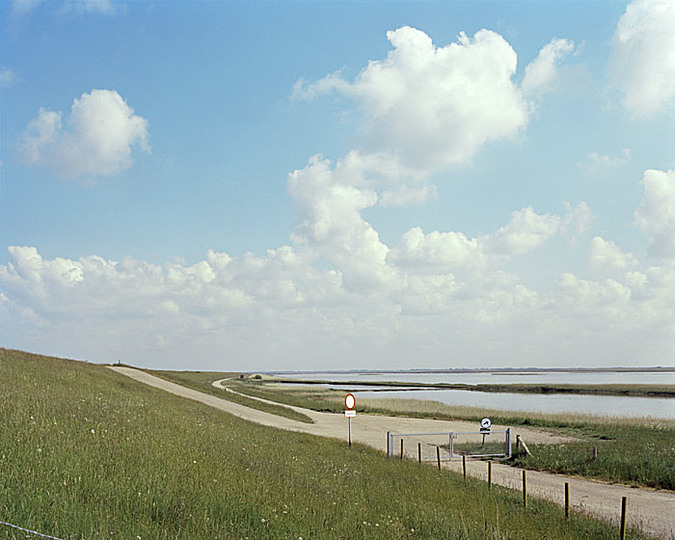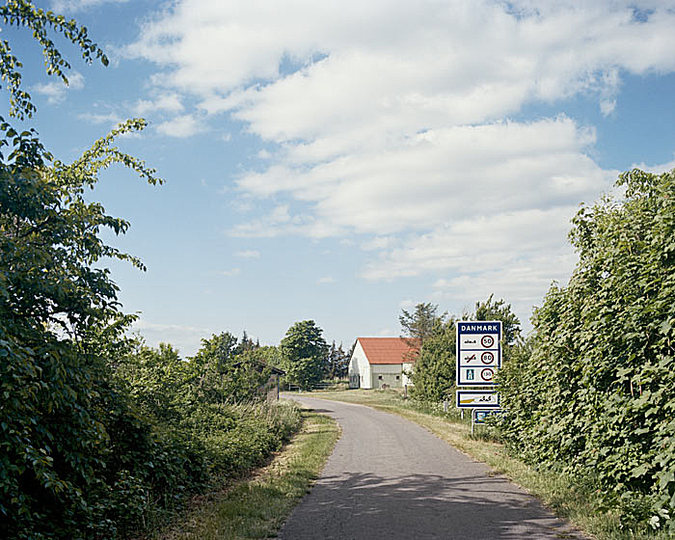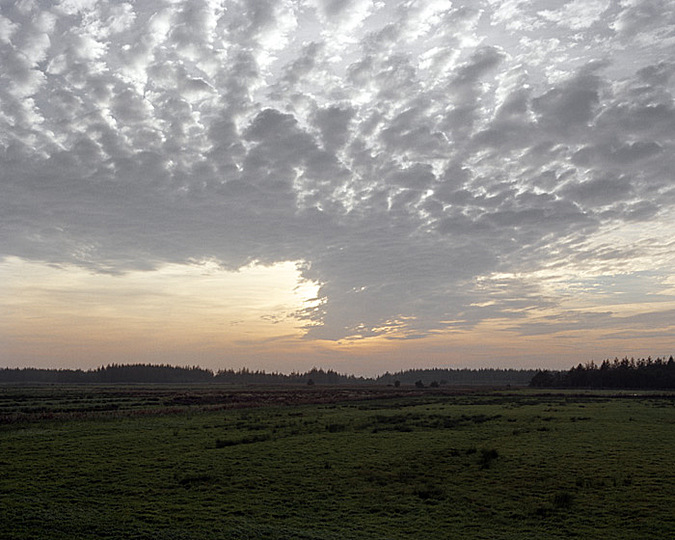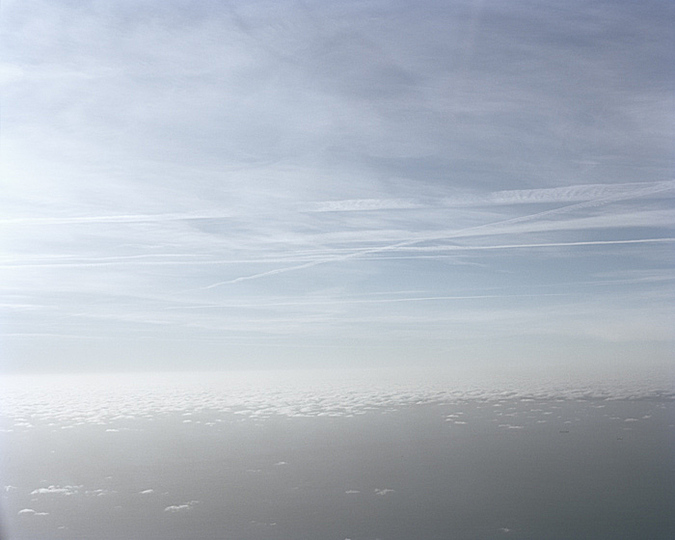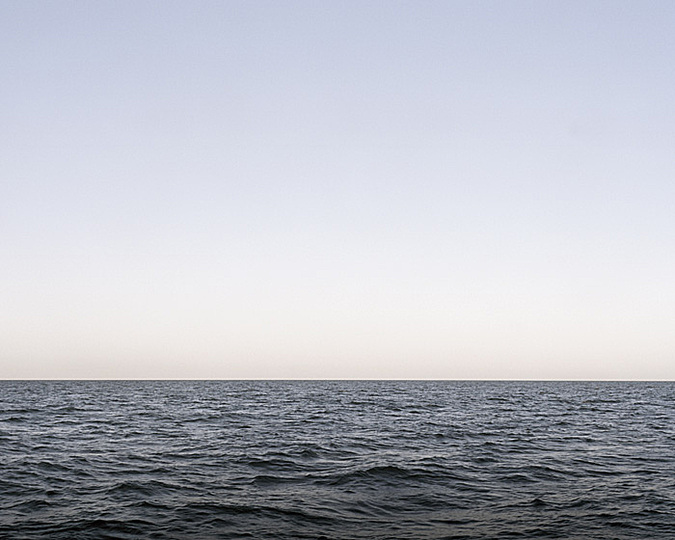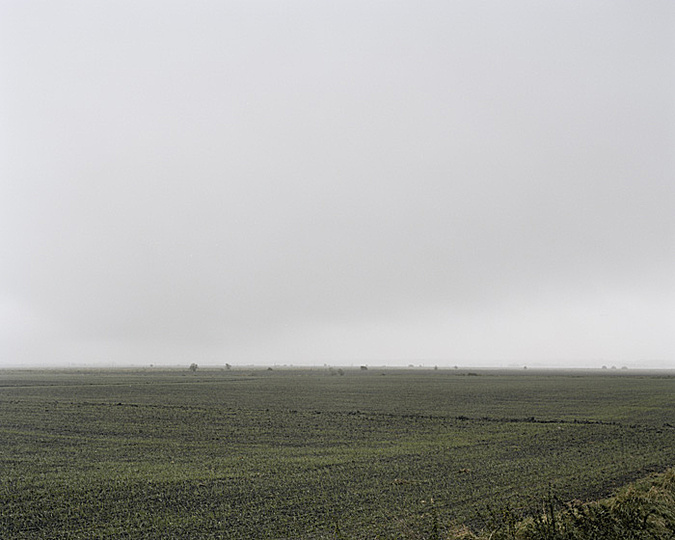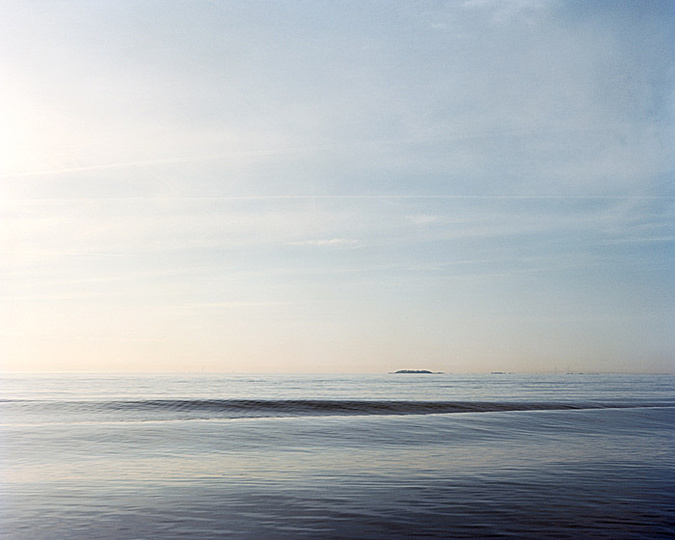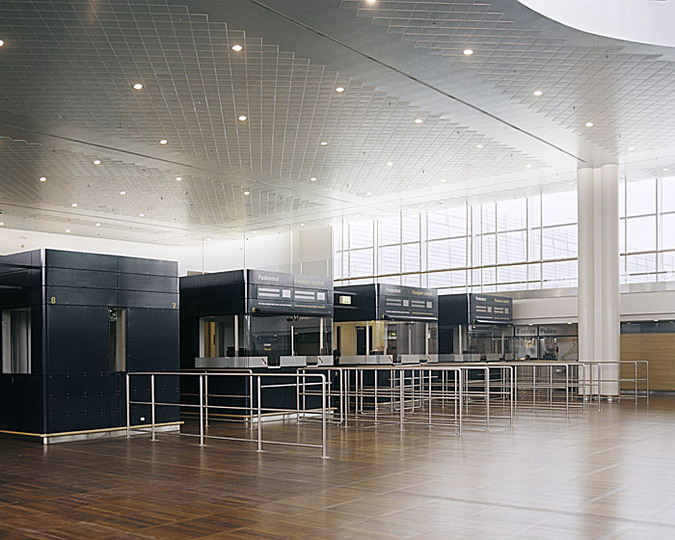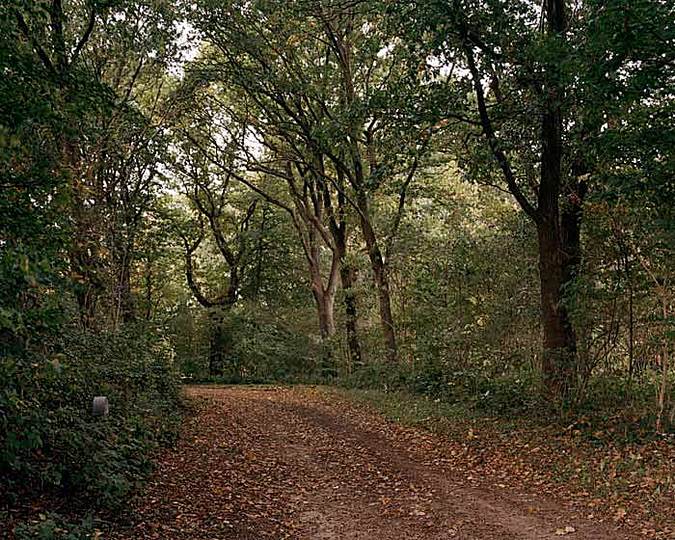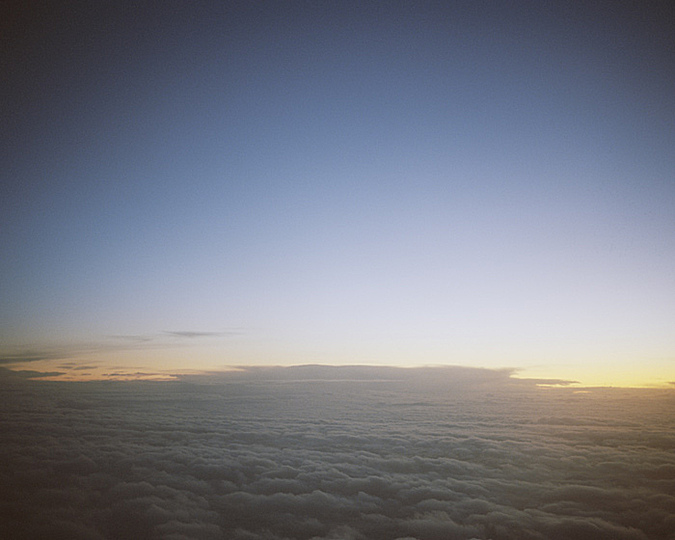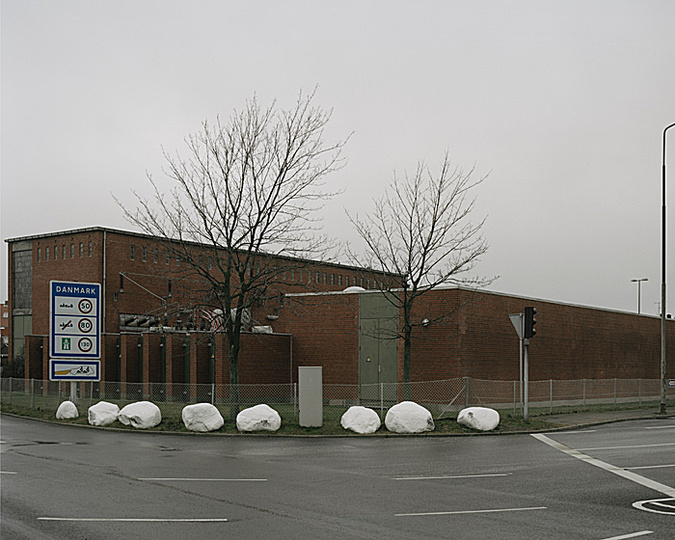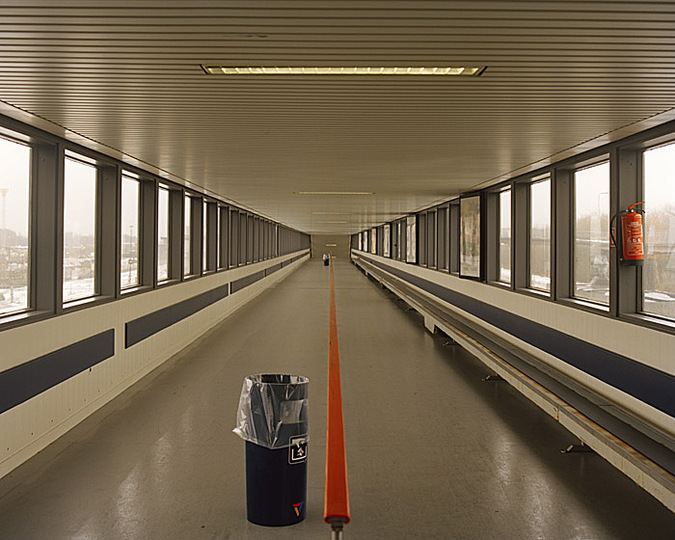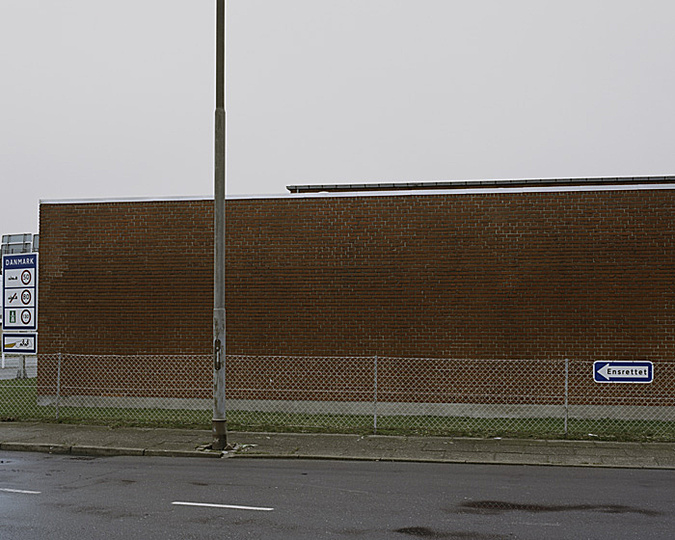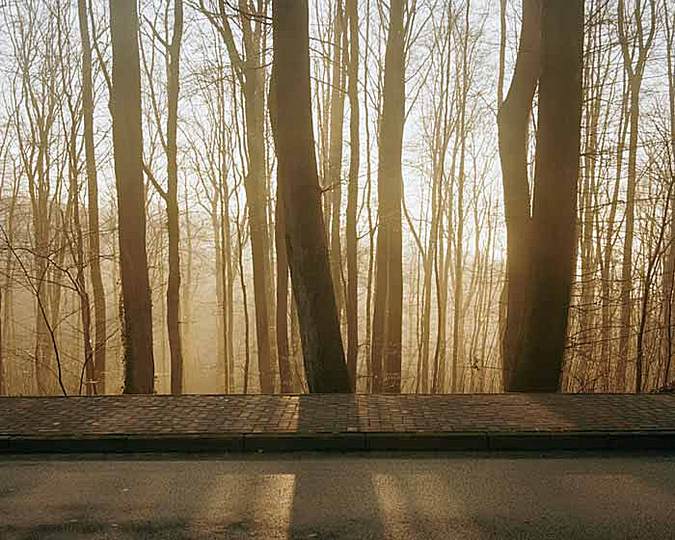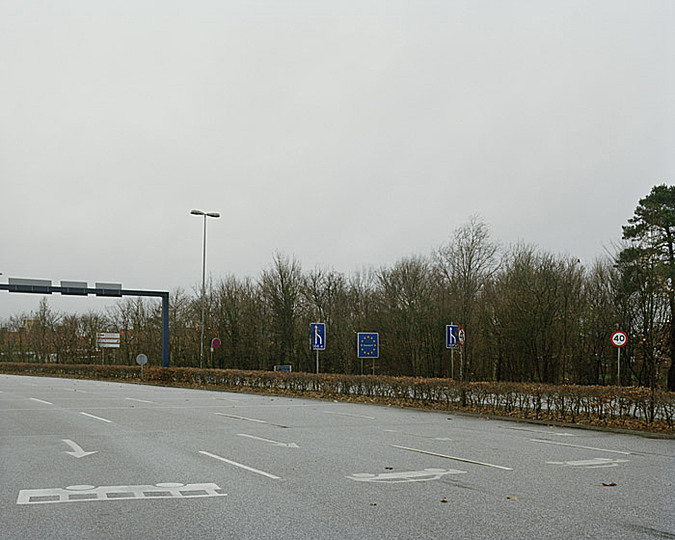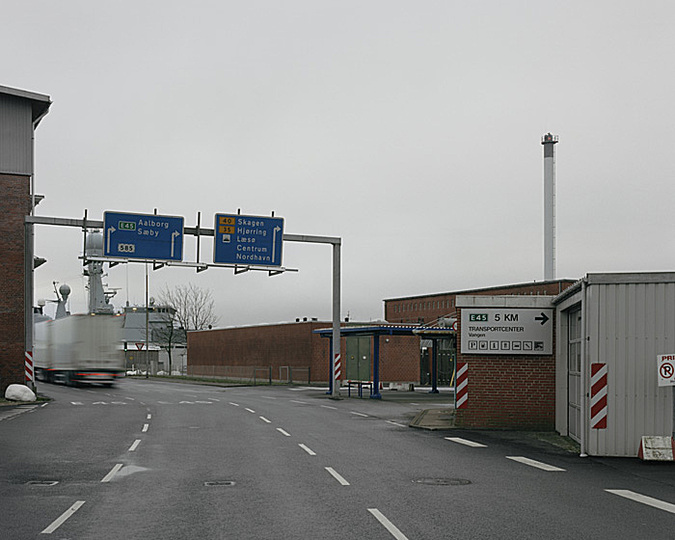Borderline
Looking at a map of the world with its many frontiers it is obvious that someone drew the lines. Separated the territories. Created new nations, and erased others. Borders do not create themselves. And they are rarely permanent. People talk about natural borders, but they are often equally arbitrary. Take Kongeåen – the river in Jutland that used to form the border between Denmark and Germany. It was natural, but not natural after all. The river is still there, but the border has moved. The word border leaves an impression of something tangible and well defined. But reality is quite different. Standing on a border it seems more mental than real. There are no lines on the ground, and the landscape is identical for miles on either side. The water that separates countries is the same colour. The clouds the same grey. Nicolai Howalt has travelled to every corner of Denmark and photographed from the inside out and outside in. His 96 images comprise the series Border. Rather than creating individual images, he has chosen to document the concept of the border in all its complexity in a series including places where there is nothing to see. The strategy here is different to that in the art project How to Hunt, a collaboration with Trine Søndergaard. This work is also a series of landscapes from throughout Denmark, but the theme is hunting and the images are more visually borne, resulting in individual works rather than Border’s conceptual framework. Border unfolds at sea, on land and from the air. Howalt’s project has an inbuilt paradox, because the subject of his study is almost invisible. The -images of sea borders and borders seen from the air don’t make much sense visually – without the conceptual context. But this is equally true of the images on the ground. Like that of a tree in the middle of a small opening by the roadside. We can see the landscape behind it. Denmark, we presume. The abstraction becomes very real when, as Howalt has done, the physical locations of borders are visited. But at the same time the absence of any ‘real’ border underlines their very real significance. The significance we give them. They are there, and they have meaning. Even though we cannot see them with the naked eye. Howalt thus demonstrates the complexity of a concept we all think we have a clear idea of. Whilst borders may not play a major role in the mind of a modern cosmopolite, who is allowed to be ‘here’ is discussed more than ever. A debate based on the differentiation of the ‘inside’ and the ‘outside’ the border marks. No matter how mental it is.
Text by Gitte Broeng, 2010.
Nicolai Howalt graduated Denmark’s Photographic Art School Fatamorgana in 1992. Howalt’s work is included in numerous public collections, including The Israel Museum, Jerusalem, MUSAC, Spain, Maison Européenne de Photographie, France, The Museum of Fine Arts Houston, USA, La Casa Encendida, Spain, Fondation Neuflize Vie, France, Art Foundation Majorca, Spain, The National Museum of Photography, The Danish Arts Foundation, Skagen Museum, Nykredit and Museet for Fotokunst, Brandts. Recent solo exhibitions include Esbjerg Kunstmuseum; Bruce Silverstein Gallery, New York; Martin Asbæk Gallery, Copenhagen and Center for Fotografi, Stockholm among others, and Howalt’s work has also been exhibited at Statens Museum for Kunst, ARoS and Skagens Museum in Denmark.
Text by Gitte Broeng, 2010.
Nicolai Howalt graduated Denmark’s Photographic Art School Fatamorgana in 1992. Howalt’s work is included in numerous public collections, including The Israel Museum, Jerusalem, MUSAC, Spain, Maison Européenne de Photographie, France, The Museum of Fine Arts Houston, USA, La Casa Encendida, Spain, Fondation Neuflize Vie, France, Art Foundation Majorca, Spain, The National Museum of Photography, The Danish Arts Foundation, Skagen Museum, Nykredit and Museet for Fotokunst, Brandts. Recent solo exhibitions include Esbjerg Kunstmuseum; Bruce Silverstein Gallery, New York; Martin Asbæk Gallery, Copenhagen and Center for Fotografi, Stockholm among others, and Howalt’s work has also been exhibited at Statens Museum for Kunst, ARoS and Skagens Museum in Denmark.
Magazines
